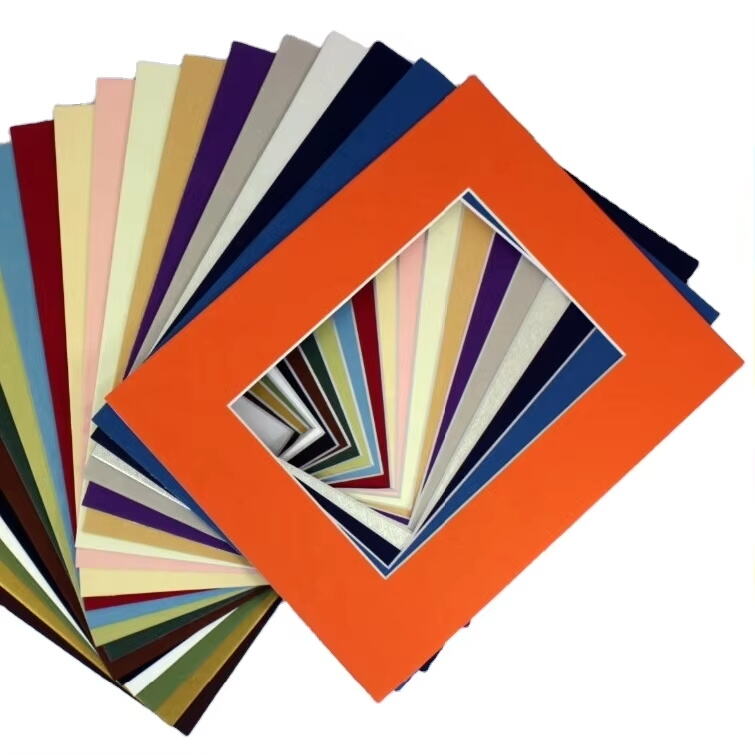What is Acid-Free Board?
Acid free boards serve as special storage solutions for artwork and important documents because they stop those items from breaking down over time due to acid exposure. Regular paper contains lignin, a substance that creates acidity and causes yellowing and brittleness after years of sitting around. Acid free alternatives skip this problematic ingredient entirely during manufacturing. Museums, libraries, and anyone serious about keeping records intact rely heavily on these boards when storing valuable collections. For genealogists preserving family histories or artists safeguarding original works, the difference between regular paper and acid free can mean the gap between lasting centuries versus just decades before disintegration sets in.
The main ingredients in making acid free boards typically consist of things like recycled paper, cotton, and various types of cellulose fibers. What makes these materials special is their natural resistance to acidity, which creates a much safer place to keep precious artworks and important paperwork over time. Cotton fiber stands out particularly since it's frequently called rag paper and comes straight from plants without any acidic components. That's why many manufacturers prefer using cotton when they want to make high quality acid free storage solutions for sensitive items.
When it comes to preserving artwork, people often talk about things like acid free mat boards and acid free backing boards. These are basically special kinds of paper products that get used when mounting art, putting frames around it, or supporting the back side of valuable pieces. What makes them so important? Well, they create this kind of shield between the artwork and whatever might be floating around in the air that could damage it. Dust, humidity changes, even chemicals from regular materials can slowly eat away at delicate works over years. That's why museums and serious collectors go through all the trouble of using these specialized boards instead of just any old stuff lying around.
Importance of Acid-Free Board in Art Preservation
Art conservationists rely heavily on acid-free boards to protect valuable works from gradual degradation. These special supports help neutralize harmful acids that would otherwise eat away at paintings and drawings over decades. When exposed to acidic environments, artworks tend to show telltale signs of distress - colors fade, paper yellows, and delicate surfaces start breaking down. Museum curators know this all too well, which is why acid-free storage solutions have become standard practice across galleries worldwide. The result? Art remains vibrant and intact for future generations to enjoy, preserving both its visual impact and historical value without unnecessary intervention.
Most art preservation specialists strongly recommend using acid-free materials because they offer real advantages for long term protection. These special boards act like shields against dirt, moisture, and other nasties that slowly eat away at artwork over time. What makes them so good? Well, acid-free boards keep colors looking vibrant and textures intact, which matters a lot whether someone has a precious family portrait or something on display at a museum. A recent paper from the Journal of Conservation and Museum Studies backs this up, showing that pieces framed with regular materials degrade much faster than those protected by acid-free alternatives. For collectors worried about preserving their investments, switching to these materials can make all the difference between a masterpiece lasting generations or turning into a sad memory.
The numbers really back up why acid-free boards matter so much for keeping artists' work intact over time. Studies show that when artwork is placed on acid-free boards, it deteriorates at a much slower rate. Some tests even suggest around a 70% drop in damage compared to regular boards that contain acids. What this means practically is that important artworks stay looking better for longer periods. For museums and collectors, switching to acid-free options does more than just protect how the art looks today. It actually helps maintain its history and keeps our cultural treasures available for people to enjoy decades from now.
Applications of Acid-Free Board
Using acid-free board as a backing for paintings really matters when it comes to keeping artwork safe from damage down the road. Most artists go for these special materials since they're free of lignin, the stuff that makes regular paper acidic over time. Acidic paper actually breaks down artworks gradually, causing colors to fade and surfaces to weaken. Traditional paper products just aren't cut out for long term storage or display. Acid-free boards offer something different though. They stay stable and don't react with the paint layers, so paintings last much longer without losing their color intensity or structural quality. For galleries and collectors who want to preserve valuable pieces, this makes all the difference between a masterpiece that survives generations versus one that turns into a sad memory.
For photographers concerned about long term storage, acid free boards make all the difference when it comes to keeping prints from turning yellow or breaking down over years. Regular photos tend to fade away or change colors because chemicals react with them naturally as time passes. When people mount their pictures on these special boards, they create what's called a buffered environment. Basically, this setup stops harmful acids from forming and doing damage to the image quality. The importance goes beyond just hobbyists storing family memories at home. Museums and galleries rely on this technique too so important works of photographic art don't disappear from history simply because nobody thought about proper storage conditions back when they were created.
Most museums and art galleries now rely on acid-free board for storing important items because it helps keep things from deteriorating over time. What they're really doing is creating storage conditions that limit contact with bad chemicals while keeping everything at a safe pH level. When museums switch to these acid-free materials, they're actually saving priceless paintings, ancient manuscripts, and other treasures from slowly breaking down due to chemical reactions. Think about how frustrating it would be if we lost centuries worth of history just because someone used the wrong kind of box! Choosing these special materials shows real dedication to making sure our shared past survives well into the future, something every museum director knows is absolutely essential.
Long-Term Benefits of Acid-Free Board
Using acid-free board really extends how long artworks last before they start to deteriorate. These boards avoid the problem of acidic materials which tend to eat away at artwork surfaces over time, creating a much better base for keeping things preserved properly. Conservators working at major museums across the country report that paintings and drawings placed on these special boards often stay in excellent condition for many years longer than those on regular mounts. Take the folks at SE1 Picture Frames for instance. They told me recently something along the lines of "We've noticed a huge difference since switching to acid-free boards. The way our clients' artwork holds up after ten or fifteen years just can't be beat." That kind of real world experience speaks volumes about why this material has become so important in the conservation field.
Acid free boards do more than just last longer they actually improve how framed pieces look over time. When artists frame their work on regular mats instead of acid free ones, the colors tend to fade faster and paper yellows around the edges. That means those brilliant hues stay fresh much longer when protected properly, giving everyone from creators to collectors something to appreciate now and years down the road. Acid free materials act as a shield against things like humidity changes and light exposure that would otherwise ruin delicate works. Most serious framers know this already, but it's still surprising how many people overlook this simple step that makes all the difference in preserving art for future generations.
Acid free boards represent an important move toward sustainability in art and archive storage alike. Made primarily from recycled materials these days, they help create better conditions for preserving artwork without harming the environment. As interest grows in greener approaches to conservation work, institutions find themselves needing solutions that protect our cultural treasures while being kinder to planet earth. When museums opt for acid free backing instead of traditional options, they're doing more than just saving historical pieces for future generations they actually set an example worth following across the entire art community. Plus it makes good business sense when considering long term costs associated with proper preservation methods.
FAQ
What are acid-free boards made from?
Acid-free boards are made from materials such as recycled paper, cotton, and cellulose fibers that do not contain acidic properties.
Why are acid-free boards important for art preservation?
They prevent damaging acidity, thus helping maintain the integrity, longevity, and quality of artworks and important documents.
How do acid-free boards benefit photography storage?
They prevent yellowing and degradation by offering a buffered environment, protecting photos from chemical interactions over time.
Are acid-free boards environmentally friendly?
Yes, they are often made from recyclable materials, promoting sustainable and green preservation practices.

